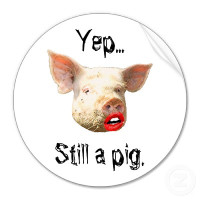‘New Keynesian’ macroeconomists have for years been arguing (e.g. here) about the importance of the New Classical Counter-Revolution in economics. ‘Helping’ to change the way macroeconomics is done today — with rational expectations, Euler equations, intertemporal optimization and microfoundations — their main critique of New Classical macroeconomics is that it didn’t incorporate price stickiness into the Real Business Cycles models developed by the New Classicals. So — the ‘New Keynesians’ adopted the methodology suggested by the New Classicals and just added price stickiness! But does putting a sticky-price DSGE lipstick on the RBC pig really help? It sure doesn’t! I have elaborated on why not in On the use and misuse of theories and models in mainstream economics, and
Topics:
Lars Pålsson Syll considers the following as important: Economics
This could be interesting, too:
Lars Pålsson Syll writes Schuldenbremse bye bye
Lars Pålsson Syll writes What’s wrong with economics — a primer
Lars Pålsson Syll writes Krigskeynesianismens återkomst
Lars Pålsson Syll writes Finding Eigenvalues and Eigenvectors (student stuff)
‘New Keynesian’ macroeconomists have for years been arguing (e.g. here) about the importance of the New Classical Counter-Revolution in economics. ‘Helping’ to change the way macroeconomics is done today — with rational expectations, Euler equations, intertemporal optimization and microfoundations — their main critique of New Classical macroeconomics is that it didn’t incorporate price stickiness into the Real Business Cycles models developed by the New Classicals. So — the ‘New Keynesians’ adopted the methodology suggested by the New Classicals and just added price stickiness!
 But does putting a sticky-price DSGE lipstick on the RBC pig really help?
But does putting a sticky-price DSGE lipstick on the RBC pig really help?
It sure doesn’t!
I have elaborated on why not in On the use and misuse of theories and models in mainstream economics, and David Glasner gives some further reasons why a pig with lipstick is still a pig:
In the General Theory, Keynes argued that if you believed in the standard story told by microeconomics about how prices constantly adjust to equate demand and supply and maintain equilibrium, then maybe you should be consistent and follow the Mises/Robbins story and just wait for the price mechanism to perform its magic, rather than support counter-cyclical monetary and fiscal policies. So Keynes then argued that there is actually something wrong with the standard microeconomic story; price adjustments can’t ensure that overall economic equilibrium is restored, because the level of employment depends on aggregate demand, and if aggregate demand is insufficient, wage cutting won’t increase – and, more likely, would reduce — aggregate demand, so that no amount of wage-cutting would succeed in reducing unemployment …
The real problem is not that prices are sticky but that trading takes place at disequilibrium prices and there is no mechanism by which to discover what the equilibrium prices are. Modern macroeconomics solves this problem, in its characteristic fashion, by assuming it away by insisting that expectations are “rational.”
Economists have allowed themselves to make this absurd assumption because they are in the habit of thinking that the simple rule of raising price when there is an excess demand and reducing the price when there is an excess supply inevitably causes convergence to equilibrium. This habitual way of thinking has been inculcated in economists by the intense, and largely beneficial, training they have been subjected to in Marshallian partial-equilibrium analysis, which is built on the assumption that every market can be analyzed in isolation from every other market. But that analytic approach can only be justified under a very restrictive set of assumptions. In particular it is assumed that any single market under consideration is small relative to the whole economy, so that its repercussions on other markets can be ignored, and that every other market is in equilibrium, so that there are no changes from other markets that are impinging on the equilibrium in the market under consideration …
I regard the term “sticky prices” and other similar terms as very unhelpful and misleading; they are a kind of mental crutch that economists are too ready to rely on as a substitute for thinking about what are the actual causes of economic breakdowns, crises, recessions, and depressions. Most of all, they represent an uncritical transfer of partial-equilibrium microeconomic thinking to a problem that requires a system-wide macroeconomic approach. That approach should not ignore microeconomic reasoning, but it has to transcend both partial-equilibrium supply-demand analysis and the mathematics of intertemporal optimisation.
